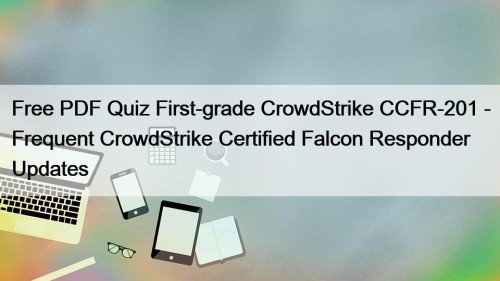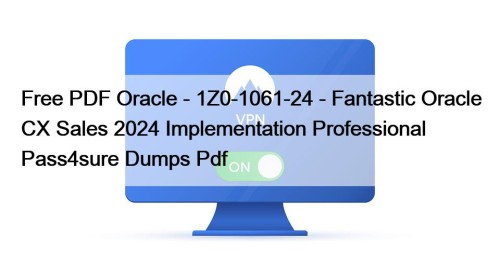Most Popular
 Authoritative Oracle Valid Test 1z0-1110-25 Braindumps - 1z0-1110-25 Free Download
Authoritative Oracle Valid Test 1z0-1110-25 Braindumps - 1z0-1110-25 Free Download
With 1z0-1110-25 practice test questions you can not only streamline ...
 Free PDF Quiz First-grade CrowdStrike CCFR-201 - Frequent CrowdStrike Certified Falcon Responder Updates
Free PDF Quiz First-grade CrowdStrike CCFR-201 - Frequent CrowdStrike Certified Falcon Responder Updates
The valid updated, and real CrowdStrike CCFR-201 PDF questions and ...
 Free PDF Oracle - 1Z0-1061-24 - Fantastic Oracle CX Sales 2024 Implementation Professional Pass4sure Dumps Pdf
Free PDF Oracle - 1Z0-1061-24 - Fantastic Oracle CX Sales 2024 Implementation Professional Pass4sure Dumps Pdf
We provide up-to-date Oracle CX Sales 2024 Implementation Professional (1Z0-1061-24) ...



300-215 Valid Exam Registration - New 300-215 Test Registration

As is known to us, a good product is not only reflected in the strict management system, complete quality guarantee system but also the fine pre-sale and after-sale service system. In order to provide the best 300-215 study materials for all people, our company already established the integrate quality manage system, before sell serve and promise after sale. If you buy the 300-215 Study Materials from our company, we can make sure that you will have the right to enjoy the 24 hours full-time online service.
Cisco 300-215 certification exam is designed to test candidates' knowledge and skills in conducting forensic analysis and incident response using Cisco technologies for CyberOps. It is an essential certification for cybersecurity professionals interested in enhancing their skills in investigating and responding to cybersecurity incidents.
Cisco 300-215 certification is highly regarded in the IT industry and is recognized by many employers as a valuable credential for security professionals. Conducting Forensic Analysis & Incident Response Using Cisco Technologies for CyberOps certification demonstrates that the holder has the knowledge and skills required to detect, investigate, and respond to security incidents using Cisco technologies for CyberOps. It can also help professionals advance their careers by opening up new job opportunities and increasing their earning potential.
Cisco 300-215 Exam is an excellent way for cybersecurity professionals to demonstrate their skills in conducting forensic analysis and incident response using Cisco technologies. Conducting Forensic Analysis & Incident Response Using Cisco Technologies for CyberOps certification is highly valued by employers in the cybersecurity industry and can open up excellent job prospects and competitive salaries. By preparing effectively and passing the exam, professionals can take their careers to the next level and become a valuable asset to any cybersecurity team.
>> 300-215 Valid Exam Registration <<
New 300-215 Test Registration - Reliable 300-215 Exam Tutorial
Although our 300-215 exam braindumps have been recognised as a famous and popular brand in this field, but we still can be better by our efforts. In the future, our 300-215 study materials will become the top selling products. Although we come across some technical questions of our 300-215 learning guide during development process, we still never give up to developing our 300-215 practice engine to be the best in every detail.
Cisco Conducting Forensic Analysis & Incident Response Using Cisco Technologies for CyberOps Sample Questions (Q34-Q39):
NEW QUESTION # 34 
Refer to the exhibit. What should an engineer determine from this Wireshark capture of suspicious network traffic?
- A. There are signs of ARP spoofing, and the engineer should use Static ARP entries and IP address-to- MAC address mappings as a countermeasure.
- B. There are signs of a DNS attack, and the engineer should hide the BIND version and restrict zone transfers as a countermeasure.
- C. There are signs of a malformed packet attack, and the engineer should limit the packet size and set a threshold of bytes as a countermeasure.
- D. There are signs of SYN flood attack, and the engineer should increase the backlog and recycle the oldest half-open TCP connections.
Answer: D
NEW QUESTION # 35
An investigator is analyzing an attack in which malicious files were loaded on the network and were undetected. Several of the images received during the attack include repetitive patterns. Which anti- forensic technique was used?
- A. steganography
- B. obfuscation
- C. spoofing
- D. tunneling
Answer: A
Explanation:
Explanation/Reference: https://doi.org/10.5120/1398-1887
https://www.carbonblack.com/blog/steganography-in-the-modern-attack-landscape/
NEW QUESTION # 36
A security team receives reports of multiple files causing suspicious activity on users' workstations. The file attempted to access highly confidential information in a centralized file server. Which two actions should be taken by a security analyst to evaluate the file in a sandbox? (Choose two.)
- A. Inspect registry entries
- B. Inspect file type.
- C. Inspect PE header.
- D. Inspect processes.
- E. Inspect file hash.
Answer: C,D
Explanation:
When analyzing suspicious files in a sandbox environment, a security analyst focuses on identifying and evaluating their behavior in a controlled setting to confirm potential malicious activity:
* Inspect processes (B): Observing the processes that the file spawns or injects into during execution helps identify malicious actions or privilege escalation. This is a crucial part of dynamic analysis in the sandbox environment.
* Inspect PE header (E): The PE (Portable Executable) header contains metadata about how the file will execute on Windows systems. It reveals details such as the entry point, libraries used, and whether the file is suspiciously crafted or packed, which can be strong indicators of malicious behavior.
The other options (A, C, D) are important in the broader forensic analysis, but within thesandbox dynamic analysis, focusing on process behavior and file execution headers is critical for determining how the file interacts with the system and whether it is indeed malicious.
Reference:CyberOps Technologies (CBRFIR) 300-215 study guide, Chapter: Understanding Malware Analysis, Dynamic Analysis of Malware, page 389-392.
NEW QUESTION # 37
A company had a recent data leak incident. A security engineer investigating the incident discovered that a malicious link was accessed by multiple employees. Further investigation revealed targeted phishing attack attempts on macOS systems, which led to backdoor installations and data compromise. Which two security solutions should a security engineer recommend to mitigate similar attacks in the future? (Choose two.)
- A. web application firewall
- B. data loss prevention
- C. secure email gateway
- D. intrusion prevention system
- E. endpoint detection and response
Answer: C,E
Explanation:
Comprehensive and Detailed Explanation:
* Endpoint Detection and Response (EDR) tools provide behavioral analytics and continuous monitoring to detect malware such as backdoors, which is especially critical on endpoints like macOS devices.
These tools are essential to detect post-compromise activities and contain threats before they spread.
* Secure Email Gateway (e.g., Cisco ESA) plays a key role in blocking phishing emails-the initial vector in this attack. It uses filters and reputation analysis to prevent malicious links or attachments from reaching end users.
Incorrect Options:
* C. DLP focuses on preventing data exfiltration, not phishing prevention or backdoor detection.
* D. IPS is effective for known signature-based threats but less effective against phishing links and endpoint-level backdoors.
* E. WAF protects web servers, not end-user devices from phishing or backdoor infections.
Therefore, the correct answers are: A and B.
NEW QUESTION # 38
Which information is provided about the object file by the "-h" option in the objdump line commandobjdump
-b oasys -m vax -h fu.o?
- A. headers
- B. help
- C. debugging
- D. bfdname
Answer: A
Explanation:
The-hoption in theobjdumpcommand displayssection headersof an object file. According to general usage and command-line documentation, and also explained in digital forensics tools discussions in the CyberOps course, the header information includes details about the name, size, VMA, LMA, file offset, and alignment of each section in the object file. This helps analysts understand how data is stored and organized within compiled files during forensic examinations.
NEW QUESTION # 39
......
Our service and Conducting Forensic Analysis & Incident Response Using Cisco Technologies for CyberOps exam questions are offered to exam candidates who are in demand of our products which are marvelous with the passing rate up to 98 percent and so on. So this result invariably makes our 300-215 torrent prep the best in the market. We can assure you our 300-215 test guide will relax the nerves of the exam without charging substantial fees. So we are always very helpful in arranging our Conducting Forensic Analysis & Incident Response Using Cisco Technologies for CyberOps exam questions with both high quality and reasonable price. And you can choose them without hesitation. What is more, we give discounts upon occasions and send you the new version of our 300-215 Test Guide according to the new requirements of the exam for one year from the time you place your order. One of our many privileges offering for exam candidates is the update. So we have received tremendous compliments which in return encourage us to do better. So please keep faithful to our 300-215 torrent prep and you will prevail in the exam eventually.
New 300-215 Test Registration: https://www.premiumvcedump.com/Cisco/valid-300-215-premium-vce-exam-dumps.html
- Quiz Cisco 300-215 Unparalleled Valid Exam Registration 😫 Search on ☀ www.pdfdumps.com ️☀️ for ⇛ 300-215 ⇚ to obtain exam materials for free download ↪300-215 Test Dumps Free
- Valid 300-215 Mock Exam 🧼 300-215 Official Practice Test 😏 Valid 300-215 Mock Exam 🥨 ⇛ www.pdfvce.com ⇚ is best website to obtain 【 300-215 】 for free download 🧀Valid 300-215 Test Simulator
- Pass Guaranteed 2025 300-215: Latest Conducting Forensic Analysis & Incident Response Using Cisco Technologies for CyberOps Valid Exam Registration 🧶 Open website ➠ www.examcollectionpass.com 🠰 and search for ➠ 300-215 🠰 for free download 🔖Valid 300-215 Test Simulator
- Pass Guaranteed 2025 300-215: Latest Conducting Forensic Analysis & Incident Response Using Cisco Technologies for CyberOps Valid Exam Registration 🙋 Download ⇛ 300-215 ⇚ for free by simply entering “ www.pdfvce.com ” website ↔300-215 Online Exam
- Pass 300-215 Exam ⏳ 300-215 Latest Exam Forum 🥣 Reliable 300-215 Test Guide ↩ Search for ➠ 300-215 🠰 and download it for free immediately on ➥ www.dumps4pdf.com 🡄 🆖300-215 Reliable Braindumps Questions
- Providing You Pass-Sure 300-215 Valid Exam Registration with 100% Passing Guarantee 👭 Immediately open ➤ www.pdfvce.com ⮘ and search for ▛ 300-215 ▟ to obtain a free download 🏩Reliable 300-215 Test Guide
- 300-215 latest dumps - free Cisco 300-215 dumps torrent - 300-215 free braindumps 🥨 Open “ www.prep4pass.com ” enter ⏩ 300-215 ⏪ and obtain a free download 🌁Valid 300-215 Mock Exam
- 300-215 Pdf Torrent 🏣 300-215 Valid Braindumps Ppt 📧 300-215 Latest Exam Forum 🛤 Open ⮆ www.pdfvce.com ⮄ and search for ⇛ 300-215 ⇚ to download exam materials for free 😦300-215 Latest Exam Format
- Pass Guaranteed Quiz 2025 Cisco 300-215 Marvelous Valid Exam Registration 🔸 Copy URL { www.pdfdumps.com } open and search for ▷ 300-215 ◁ to download for free 🥩300-215 Valid Braindumps Ppt
- Cisco - Efficient 300-215 - Conducting Forensic Analysis & Incident Response Using Cisco Technologies for CyberOps Valid Exam Registration 🧎 Enter “ www.pdfvce.com ” and search for { 300-215 } to download for free 🐐Pass 300-215 Exam
- Pass Guaranteed Quiz 2025 Cisco 300-215 Marvelous Valid Exam Registration 👔 Easily obtain free download of 【 300-215 】 by searching on ⏩ www.passcollection.com ⏪ 🚶300-215 Official Practice Test
- 300-215 Exam Questions
- improve.cl learn.codealo.com mlms.mitacor.net bidhaamiye.com yblearnsmart.com www.ouniuxinxi.com digitalwbl.com caitabts99.com qlearning.net www.63kuaidi.com
Tags: 300-215 Valid Exam Registration, New 300-215 Test Registration, Reliable 300-215 Exam Tutorial, Reliable 300-215 Exam Book, 300-215 Valid Exam Simulator